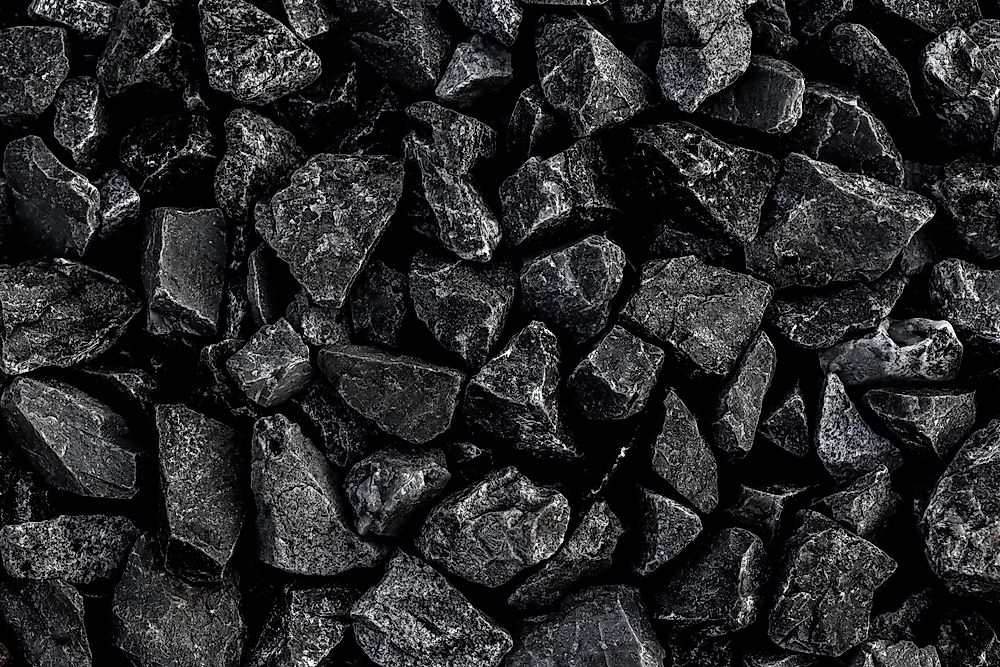What is Coal?

5. Description
Coal is a combustible, sedimentary rock with a brownish-black or even entirely black color. Coal is primarily composed of carbon, with smaller, varying quantities of hydrogen, nitrogen, sulfur and oxygen. It is classified into different types, based on its composition and time of formation. Namely, the most important varieties of coal are peat, lignite, sub-bituminous, bituminous, and anthracite coal. Peat is actually considered to be merely a precursor of true coal, and is itself partially carbonized plant debris that serves as a major source of fuel in much of the world. Anthracite is the oldest formed variety of coal, and has an extremely high carbon content (about 92%), being practically devoid of moisture and volatile components. From the geological timescale point of view, lignite is the most recently formed coal, and is relatvely higher in volatile matter, and lower in fixed carbon content (ranging from 60-70%). The properties of sub-bituminous and bituminous coal lie in between those of anthracite and lignite. Bituminous coal has a fixed carbon content of 77-87%, and is the most abundant classification among all other varieties of coal. Bituminous coal accounts for nearly 50% of the coal produced in United States.
4. Location
Coal reserves are found within a large number of countries, spanning all continents other than Antarctica. The largest proven, and recoverable, reserves of coal are to be found within the US, the Russian Federation, and China. India, Australia, and South Africa follow close behind. Within the United States, there are three major regions with large-scale coal mining operations, namely being the Western Coal Region, the Appalachian Coal Region, and the Interior Coal Region. Each of these regions somewhat specializes in producing different grades and varieites of this important energy source.
3. Formation
At various points of time throughout geological history, natural processes such as tectonic plate movements and flooding have buried low-lying wetlands and forested areas of our world underneath thick layers of soil. Over time, the soil layer above the compressed vegetation grew, and further pressurized the plant matter underneath. As this vegetation moved into greater depths below the surface of land, the natural biodegradation processes were halted. Instead, the conditions of concurrent high temperatures and high pressures found underneath the surface led to the gradual conversion of plant matter into coal. This process is referred to as "carbonization". The quality of the coal formed is determined by a number of factors, such as the nature of the vegetation from which it originated, the depth at which the carbonization process started, the temperature and pressure conditions through the process, as well as the time taken for the carbonization process to form the resultant coal.
2. Uses
Coal is a blessing for humankind, with immediate applications to many industries worldwide. Within them, different categories of coal are used for different purposes. Steam coal is primarily used for power generation, while "coke", or metallurgical coal, is used in steel plants for steel production. Currently, 40% of global electricity needs are met by coal-powered power plants, and 70% of global steel production is dependent on "coke" coal. Derivatives of coal are also widely used in a large number of other industries, including the pharmaceutical chemicals industry, the paper industry, and aluminum refineries. Several important industrial chemicals are manufactured from the by-products of coal combustion. Benzene, naphthalene, and phenol, for instance, are each manufactured using coal tar. Ammonia-based fertilizers and salts are produced using the ammonia generated from coal combustion as well. Water and air purification devices use "activated carbon" filters to facilitate their purposes. However, the rampant use of coal as a fossil fuel is highly discouraged by several major environmental and health organizations, due to the adverse effects of coal combustion and its toxic by-products on human, animal, and plant health. In fact, the long-term and extensive burning of coal lists among the primary sources of greenhouse gases in the earth's atmosphere, while its exhaust has more immediate effects on human respiratory health, the degradation of habitats, particularly wetlands, and the formation of "smog" and acidified precipitation.
1. Production
Coal can be extracted from the earth either by surface mining or underground mining, depending on its depth of location below the land surface. If deposits occur less than 200 feet below the surface of land, surface mining can be put to action to retrieve coal. This method is both time- and labor-saving as well, and in turn economically efficient. It just necessitates the removal of the "overburden", or the top layer of vegetation, soil, and rocks that cover the access points to the coal deposits immediately below them. However, this method is highly hazardous to the ecosystem, often completely dismantling it, and resulting in leakage of toxic chemicals up to the surface and into surrounding water. Underground coal mining is more relevant, especially given that most of the largest coal reserves today lie in deposits well below the surface of the earth. Here, mines are dug into the earth, and elevator systems are used to transport miners to the subterranean deposit sites for retrieval of the coal. This is less harmful for the environment than surface mining, but miners are subject to considerable dangers in the underground coal mines.











